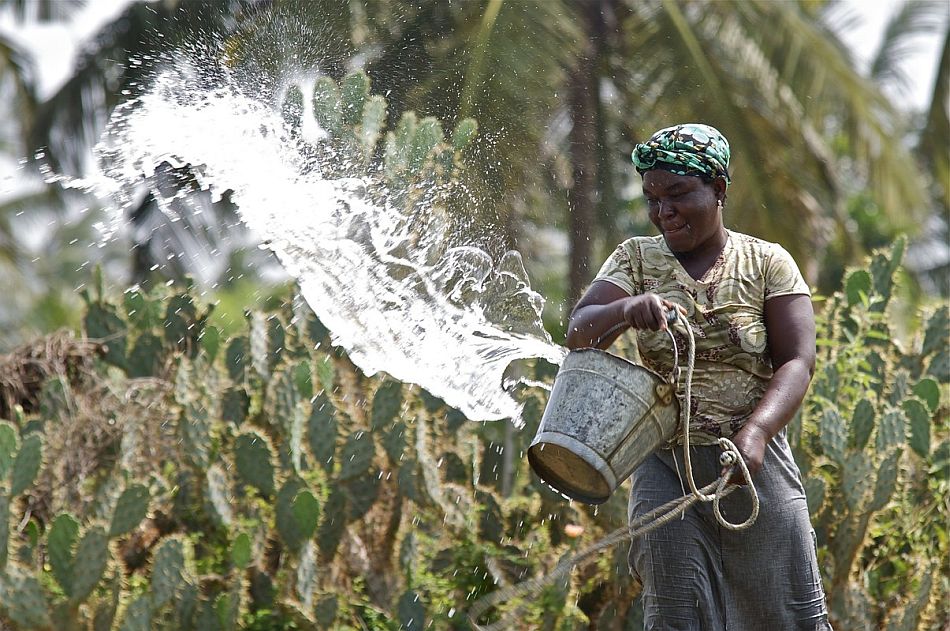New research identifies legal pathways for better recognition and protection of customary water tenure in sub-Saharan Africa as well as concrete solutions to improve current water law and water infrastructure development programs.
By Jessica Troell, Senior Attorney Environmental Law Institute, and Barbara van Koppen, Scientist Emerita IWMI
Community-based tenure systems regulate access to and use of natural resources by indigenous peoples and local communities (IPLCs) on at least half the world’s land, including over 60% of the land in sub-Saharan Africa.

There is increasing acknowledgment of the importance of community-based tenure rights for resource stewardship as well as the human rights to water, food and an adequate standard of living. This has sparked global progress in the legal recognition of these rights, particularly for community lands and forests. Between 2002 and 2017, IPLCs’ forest tenure advocacy successfully increased forest areas legally recognized as owned by and designated for communities by at least 40%.
Despite this progress, advocacy and policymaking regarding community-based water tenure rights has not received as much attention. Without legal recognition, communities’ water tenure rights are at risk of being overlooked, ignored, manipulated or eroded as competition for water resources increases. This poses a substantial threat to communities’ water security and, in turn, to their livelihoods, food security, and resilience to economic and climatic shocks.
Land-water nexus
In countries where customary water rights are legally recognized, data published by the Rights and Resources Initiative and Environmental Law Institute show this recognition is not commonly found in water laws. Rather, it is found in constitutional provisions, land or forest laws, or other administrative or sectoral legislation. In other words, legal frameworks recognizing customary water rights are frequently characterized by a ‘land-water nexus’ whereby communities’ water rights depend on the legal recognition of their land, forest, or territorial rights.
Kenya’s constitution, for example, legally recognizes community land as ‘vested in and held by communities identified on the basis of ethnicity, culture, or similar community of interest’. The constitution also defines ‘land’ as including ‘any body of water’ on or under the surface of that land.
In some cases, the land-water nexus provides the only recognition of customary or community-based water rights. Liberia, for instance, has no national water framework law. Consequently, the recognition of water rights related to customary land depends on forest or land laws.
As the findings of a new IWMI Research Report by Jessica Troell and Stephanie Keene show, the existence of a land-water nexus can provide more diverse legal pathways for the recognition and protection of IPLCs’ customary water tenure. However, the failure of most countries to harmonize tenure recognition and protections across the land, forest and water sectors can also result in inconsistencies or even contradictions across laws that ultimately undermine the security of recognized customary water rights.
Priority actions
Besides harmonizing laws across the land-water nexus and promoting cross-sectoral coordination, the Research Report recommends several priority actions for governments and other law-making bodies. They include:
- strengthening national water laws to explicitly recognize and protect community-based and customary water tenure rights
- promoting legal empowerment and support for IPLCs and particularly the women within those communities to ensure that they are aware of their legally recognized water tenure rights and have the capacity to legally assert and enforce those rights
- prioritizing livelihoods-based water rights for IPLCs by assessing where legal requirements can be tailored more closely to the needs and capacities of communities.
These findings and recommendations are supported by a complementary Research Report that synthesizes empirical research on living customary water tenure in rights-based water management in sub-Saharan Africa. This includes infrastructure (such as wells, pumps and sprinklers) as part of water tenure. Once the naturally available surface or groundwater sources have entered the infrastructure, investors in the infrastructure are not only able to move and allocate water but also to make strong claims to the water, to the exclusion of non-investors.
In addition, the report examines the interface between customary tenure and formal interventions to identify concrete solutions to improve both current water law (permit systems) and water infrastructure development programs.
Joining forces
Permitting systems are the dominant form of water law across Africa. These can enable more effective and sustainable water management and use for the relatively few large-scale users. However, the systems are not tailored to the rights, needs and priorities of the majority of small-scale users in rural communities. As a result, they impose often onerous financial and administrative burdens in contexts where governments frequently lack the necessary capacity to support the systems’ implementation. This can be solved by recognizing, instead of overriding, customary water tenure.
For water infrastructure development, community-scale participatory planning and design would ensure local relevance and uphold customary water tenure, in which water infrastructure is often multi-purpose, while enhancing sanitation and hygiene practices as well as agricultural water productivity. By joining forces, the report concludes, the water, sanitation and hygiene (WASH) sector along with the irrigation sector can accelerate infrastructure development, including to homesteads where water is most often used by women for both domestic and productive purposes.

